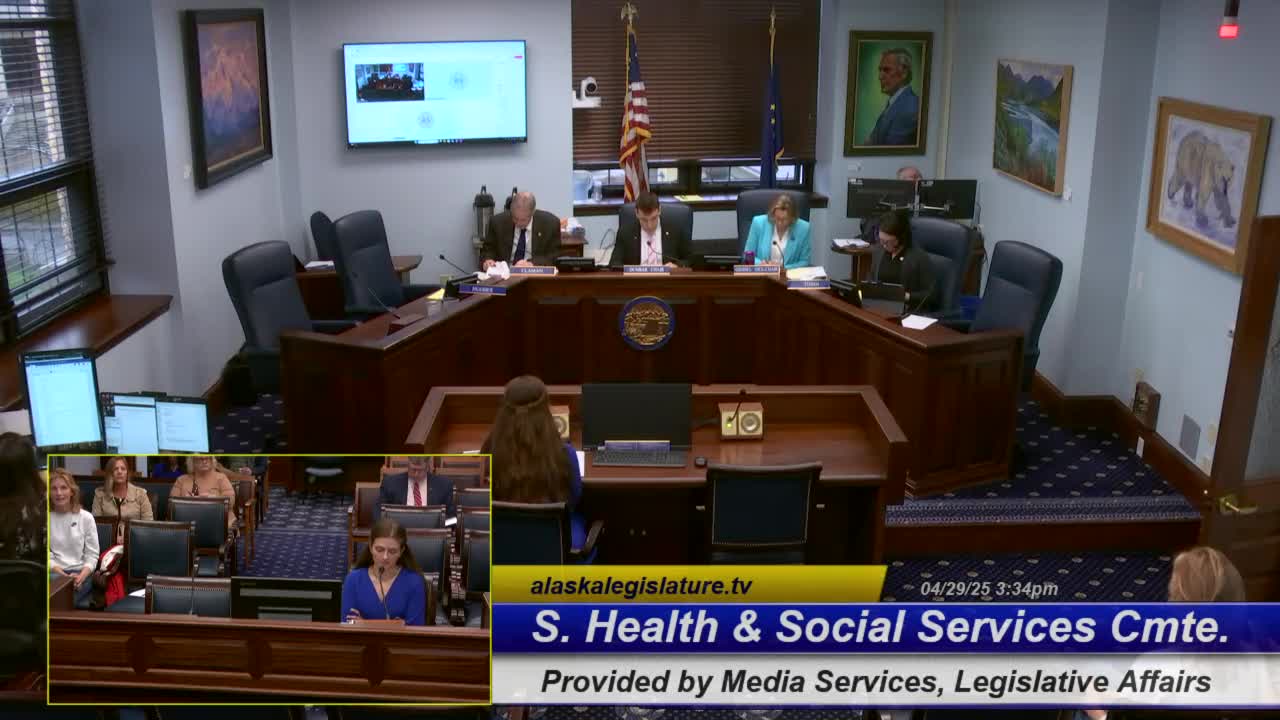Alaska Senate Bill 178 expands early intervention access for children with disabilities
April 29, 2025 | 2025 Legislature Alaska, Alaska
This article was created by AI summarizing key points discussed. AI makes mistakes, so for full details and context, please refer to the video of the full meeting. Please report any errors so we can fix them. Report an error »

In a significant move to enhance support for children with developmental delays, the Alaska Senate Health and Social Services Committee discussed Senate Bill 178 during a meeting on April 29, 2025. The bill aims to expand access to the Infant Learning Program (ILP) by lowering the eligibility criteria from a 50% developmental delay to just 25%. This change is expected to provide vital early intervention services to more children, helping them reach developmental milestones before entering kindergarten.
Currently, many providers hesitate to refer children with delays between 25% and 50% due to uncertainty about meeting state requirements. By adjusting the eligibility threshold, the bill seeks to alleviate this concern, ensuring that more children receive the necessary support. The proposed changes are based on recommendations from the Alaska Department of Health's Interagency Coordinating Council and have been shaped by input from various stakeholders involved with disabled children and their families.
Amy Simpson, Executive Director for Programs for Infants and Children, emphasized the importance of this bill during her presentation. She noted that the ILP serves children statewide through a network of grantees, providing essential services to infants and toddlers with disabilities. The bill also includes provisions to allow the ILP to bill Medicaid for a broader range of early intervention services, which currently rely heavily on state general funds.
Other key aspects of the bill include the removal of outdated provisions regarding training programs for paraprofessionals and a commitment to review qualifying conditions every five years. These updates aim to streamline the process and ensure that children at risk for developmental delays receive timely and appropriate support.
The committee's discussions reflect a growing recognition of the need for accessible early intervention services in Alaska, with the potential to significantly impact the lives of many families. As the bill progresses, it represents a step toward addressing the developmental needs of children across the state, ultimately aiming to reduce future special education costs and improve educational outcomes.
Currently, many providers hesitate to refer children with delays between 25% and 50% due to uncertainty about meeting state requirements. By adjusting the eligibility threshold, the bill seeks to alleviate this concern, ensuring that more children receive the necessary support. The proposed changes are based on recommendations from the Alaska Department of Health's Interagency Coordinating Council and have been shaped by input from various stakeholders involved with disabled children and their families.
Amy Simpson, Executive Director for Programs for Infants and Children, emphasized the importance of this bill during her presentation. She noted that the ILP serves children statewide through a network of grantees, providing essential services to infants and toddlers with disabilities. The bill also includes provisions to allow the ILP to bill Medicaid for a broader range of early intervention services, which currently rely heavily on state general funds.
Other key aspects of the bill include the removal of outdated provisions regarding training programs for paraprofessionals and a commitment to review qualifying conditions every five years. These updates aim to streamline the process and ensure that children at risk for developmental delays receive timely and appropriate support.
The committee's discussions reflect a growing recognition of the need for accessible early intervention services in Alaska, with the potential to significantly impact the lives of many families. As the bill progresses, it represents a step toward addressing the developmental needs of children across the state, ultimately aiming to reduce future special education costs and improve educational outcomes.
View full meeting
This article is based on a recent meeting—watch the full video and explore the complete transcript for deeper insights into the discussion.
View full meeting
